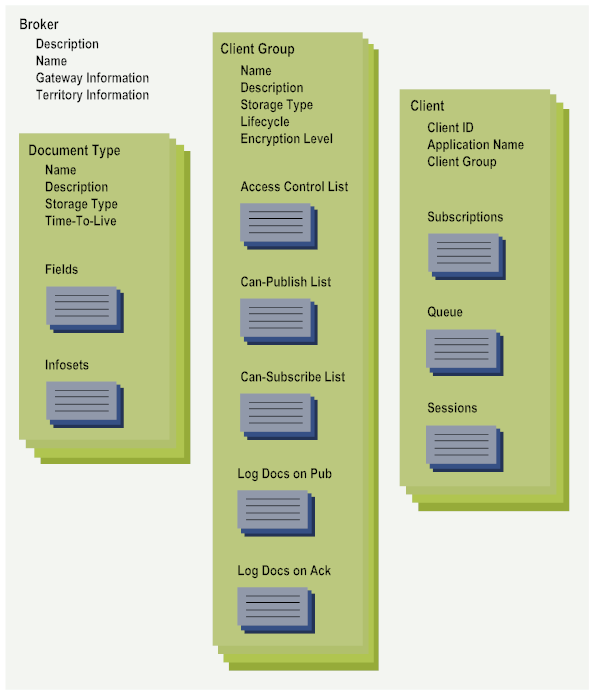Role of Broker
Broker is an entity that resides on a Broker Server. When a client connects to Broker Server, it specifies the Broker with which it wants to interact.
Broker contains three key types of objects:

Document types, which define the kinds of documents that clients of the
Broker can exchange.

Client groups, which are objects that represent a set of client properties and permissions. Any client that connects to a
Broker must declare the client group to which it belongs. If the
Broker Server on which the
Broker is running is SSL enabled, an access control list (ACL) can be assigned to the client group. By restricting access to a client group, you restrict access to the
Broker.

Clients, which are state objects that represent the client programs that connect to the
Broker. The state object maintains a client's list of subscriptions and its queue. If a client program connects to the
Broker as an "explicit destroy" client, the
Broker maintains the state object even if the client program is physically disconnected from the
Broker.
A Broker contains document types, client groups, and client state objects
Although we tend to think of Brokers as functioning objects, they are actually data structures that encompass a collection of objects upon which processing threads within Broker Server operate. In this sense, a Broker is more like a container that enables you to partition the publish-and-subscribe capabilities of a Broker Server into separate domains or namespaces.
